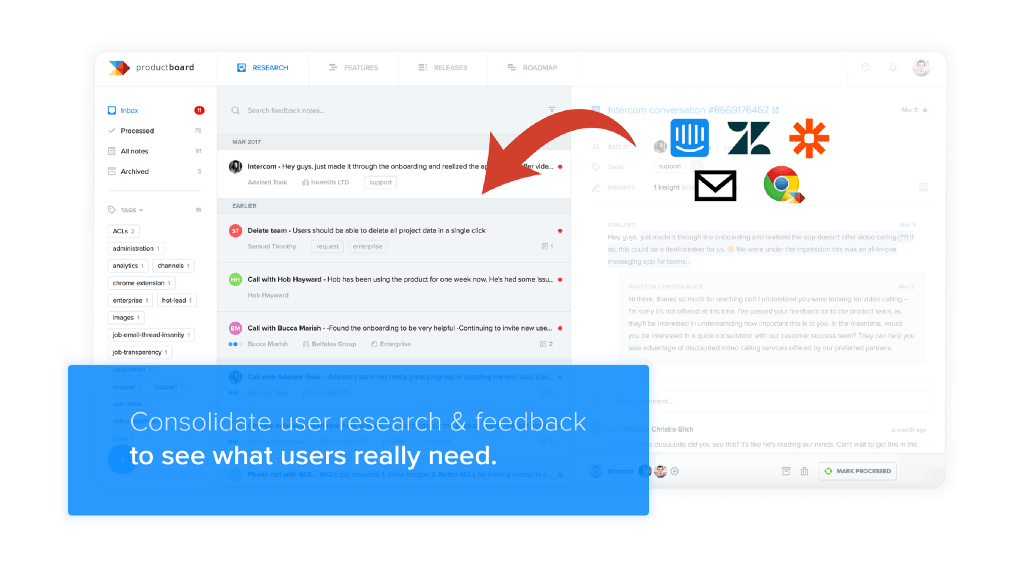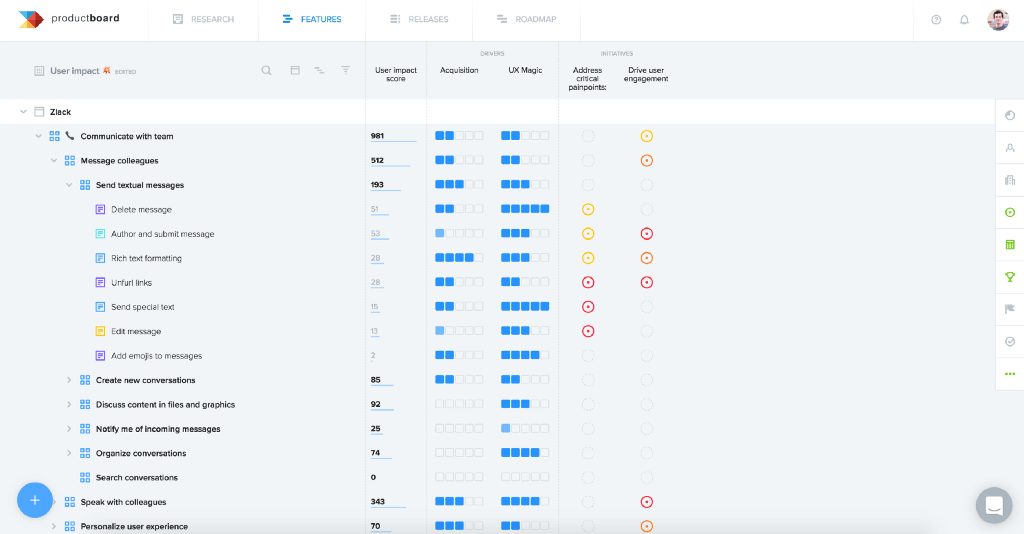Why your product management process isn’t scaling (and how to fix it)

At any given time, product managers (PMs) are responsible for the business, design, and engineering aspects of product development. And when the company hits hypergrowth, PMs have to rapidly scale up each of these departments to meet new demand — no easy task. Scaling product management processes is often slow because PMs are working with inefficient product management tools.
When product management processes don’t scale with the company, you can lose valuable customer insights or waste weeks focusing on the wrong features. Fortunately, there are ways to reorganize your product management processes so they scale quickly and efficiently. The key is using a platform designed specifically for product management. But before we dive into the solution, let’s look at the problem more closely.
Your tools are not designed for product management
Most PMs are using tools that are not designed for the dynamic, multi-faceted nature of product management.
They’re inadequate
It’s common for PMs to track features and make roadmaps using static tools like Google Sheets or PowerPoint. These types of tools have to be manually updated, which consumes large amounts of time and can dramatically slow down the scaling effort. Static tools also make it hard to have standardized processes across product management teams within a company. Lack of coordination between product teams hinders growth and prevents rapid scaling.
Another common option is for PMs to use tools, like Jira, designed for engineers and developers. Engineering and development tools tend to assume you have an end-product in mind, so they don’t have the type of early-stage planning features that PMs often need. Engineering- and development-focused tools typically lack the capability to sort features based on overall objectives, so PMs and their teams can’t easily see the reasons behind focusing on certain features.
Data is stored in multiple locations
Common PM tools don’t bring all the different elements of product management under one roof. Trying to scale so many different elements at the same time is incredibly difficult, and important information is going to fall through the cracks. For example, customer insights and suggestions can come from many sources, including email, support tickets, sales calls, and social media. These insights are often stored wherever they arrive or in separate spreadsheets, depending on what department receives them. Without a single place to log and organize insights from all sources, some feedback will inevitably be missed, which makes prioritization of features and projects more difficult.
Just like customer insights, different product management processes are often completely separate from one another. Planned features and release dates might be managed with one software or spreadsheet and large-scale objectives in another. It’s difficult to scale quickly when you have to update each process individually.
Static and inadequate tools are one of the main reasons product management processes don’t scale easily. It only makes sense, then, that the solution is a dynamic system designed for product management.
How a product management platform helps
Product management platforms offer several key features that make scaling easier.
Consolidates customer insights
The Product Excellence methodology tells us that deep user insight is vital for building products that people use and love. The product team needs to have a deep understanding of what customers actually need. A good product management platform should allow you to store and organize all customer input. Information from customer emails, Slack comments, support tickets, sales calls, and social media should all be forwarded to or input in the platform for easy organization.
A good product management platform should allow you to store and organize all customer input. Information from customer emails, Slack comments, support tickets, sales calls, and social media should all be forwarded to or input in the platform for easy organization.
With all the information in one place, PMs can see what features customers are requesting most often and which features customers are rating as high priority. Product teams can then prioritize working on the most-requested and most highly rated features rather than wasting time working on features the customers place less value on.
A good example of a product management platform in action comes from Sprout Social. They had customer input stored separately in emails, spreadsheets, and survey results and scattered across departments depending on who collected it. Their product team was missing important feedback from customers. Sprout Social decided to use productboard to consolidate all their feedback into one place.

(Source)
With all the insights readily available, Sprout Social can now organize them and use them to make informed prioritization decisions.
Organizes features based on user needs
Once you have customer insights stored, you can use them to create overall objectives based on what customers actually need. Then, organize your features by which objective they help achieve. That way, your team and the rest of the company can easily see the reasons you chose to focus on certain features over others. User needs are the ‘why’ behind feature development, and organizing features this way brings the focus back to the customer and away from the features as disconnected ideas. It also gives your product team a clear prioritization path, so they can see what their current and upcoming objectives are and what features are included.
For example, Traxo uses productboard to organize ideas based on user needs, so they have solid evidence for every feature they decide to prioritize. In the platform, each feature is grouped by the need it addresses.

(Source)
This organization enables Traxo’s product team to quickly see why they are prioritizing certain features and exactly what value these features will add to the customers.
Makes it easy to share your product strategy
Having a clear product strategy is another pillar of Product Excellence methodology. It’s difficult to keep your product strategy on track and scale it up if other product teams and the wider company don’t know what it is. Product management platforms enable you to easily share high-level product strategy with other teams and departments. You can share progress updates and upcoming features and releases.
Open communication of product strategy helps keep all product teams on the same page, so they understand each other’s priorities. It also ensures that other departments understand the product team’s priorities so that each department knows what they can do to help with product scaling. Customer support and sales teams, for example, need to understand their role in sharing customer insights, so the product team can focus on the right features.
iAdvize uses the Releases board on productboard to keep all designers and PMs on the same page about what features will be released and when. Using the product management platform helps keep the teams on track and coordinated, so features are released on time.
Product management platforms are one of the most important resources for PMs. They are specifically designed for product management, so they can handle the dynamic and multi-faceted nature of each step in the process.
Scale More Effectively with a Product Management Platform
One of the main reasons product management processes often don’t scale as effectively as other processes is that they are completely separate. It’s incredibly time-consuming to manually consolidate information from different sources, and it makes it difficult to get everyone on the same page for feature prioritization and release dates. Using a product management platform brings all aspects of product management together and makes effective scaling much easier.






